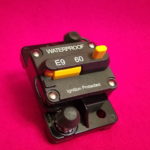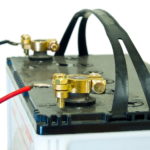Have you ever pulled up on a school of fish that just seemed to be hiding in the corner? It almost seems like you scared them over there. Is it possible that I scared them away with my electric trolling motor?
Electric trolling motors don’t scare fish in regular operation, but rather loud irregular noises scare fish. If you make an effort to keep your motor running at a consistent speed below 50% power, your motor will have little to no effect on the fish you are targeting.
There are other best practices that you can also follow to avoid scaring your fish away. In this article, we will cover some top tips to prevent scarring your fish away.
Note: most links in this article are Amazon.com Affiliate links, see Affiliate Disclosure, thank you.
Best Practices for Sneaking Up On Fish While Using Your Electric Trolling Motor
You can do many things to help prevent scarring fish, and most don’t relate to your electric trolling motor. No tactic is foolproof, but our list will help narrow down some things that could affect your fish-catching productivity, starting with your electric trolling motor.
1. Run Your Electric At a Consistent Speed
Always try to run your trolling motor below 50% and at a consistent speed when approaching fish or covering ground where there are fish. The fish are not scared by constant environmental noises.
If your boat slowly approaches them, they will not think anything about the noise. If you feel the need to adjust your speed, do it slowly and in incremental steps. As I change my speed, I count to five in between each adjustment.
Also, avoid turning your motor on and off suddenly or using your rabbit speed setting. Reserve those kinds of actions for emergency corrections only.
2. Adjust your Propeller Depth
Keep your propeller under the surface of the water, 12 inches if possible. Doing so will keep your propeller from splashing water around and making noises.
You can conveniently readjust your electric trolling electric motor depth with the depth collar. Most depth collars have a huge plastic or composite wing nut that can be loosened for simple adjustments.
As a general rule, set your motor as deep as possible unless fishing in shallow water.
Check out our article How to Measure Trolling Motor Shaft Length.
3. Electric Currents in The Boat
You need to make a serious effort to stop or minimize electrical currents in boats. Fish are susceptible to electric current or fields and also can quickly be frightened by these fields.
Every electronic device in your boat can add to your electric field. This can be referred to as electrical leaks or a “hot boat.”
There are devices like the Protroll to help compensate for this issue. The real solution is to test every electronic device to ensure it is well-grounded and doesn’t cause a voltage spike when turned on.
This video shows what you are looking for at the 00:38
4. Fish Finders Sonar
Along the same lines as a “hot boat,” fish can sense the ping when running three high-powered depth finders. If you can, reduce your output by reducing your power or turning off one of your depth finders.
While I am not aware of any official studies on sonar and fish, I had watched fish scatter when I turned on my Panoptix. It is possible that something else caused this response. However, I didn’t observe any other variable.
5. Hull Slapping
When your boat encounters waves, the bow of your boat will lift and drop back to the water’s surface. The boat will generate a loud noise as the hull slaps the water’s surface.
There are a few different tips to minimize hull slap noise.
- Point your stern into the wave, if safe. If the waves are not too large, your stern will roll smoothly across the wave.
- Tie a few used throwable cushions, dock bumpers, or pool noodles to the bow cleat. The cushion will break the surface of the water before the hard bottom of your boat, reducing the noise.
- Add weight to the front of your boat. Placing a battery or spare gas can in the front of your boat can reduce the amount of lift your boat gets from waves but don’t overdo it and swamp your boat.
- Fish off the bow of your boat. Along the same lines as the last tip, putting the weight of one person in the boat’s bow can change the ride of your boat, and if trolling can even help with tracking a straight line.
- Tie a sea anchor(AKA drift sock) can help keep the boat’s bow down, but this only works when the boat is moving.
I am sure there are many other ways to keep your hull from slapping, but these tips are a great place to start.
Bonus Tips: Loud Noises in the Boat
It is well known that loud noises scare fish. Think of all the little noises that you make on your boat.
There are some simple things that you could do to eliminate those noises, like be careful when setting down your weights. Not dropping doors is another helpful thing that will prevent loud noises.
Playing music in the boat might not be fish-friendly. Loud conversations, celebrating, and making loud remarks after missing a fish might all contribute to missing a bite.
Finally, if you need to use your gas trolling motor, the gas trolling motor follows the same rules as your electric trolling motor. Always avoid making frequent adjustments to your speed. Try not to take your motor in and out of gear. Run your motor as slow as possible that still keeps you fishing.
Conclusion
Your electric trolling motor will not be a significant source of noise, certainly not enough to scare the fish. There will undoubtedly be some things that you can do to be sure of that.
I would spend more time focusing on little details to avoid scaring fish. Think more about the benefits that your electric trolling motor brings to your fishing game rather than any negatives.



